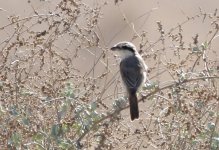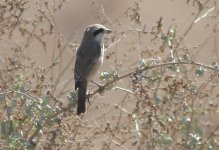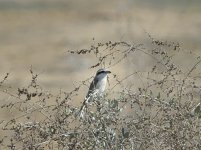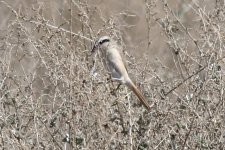andreas bruun kristensen
Active member
This male Isabelline Shrike was photographed at Sede Boker, southern Israel, February 13th, 2014.
I have got a few comments as to which subspecies it is.
I think it is most probably an isabellinus based on the pale bill base, pale lore, and pale upperparts. However, the supercilium is quite prominent and the underside is very pale which might suggest phoenicuroides?
The photos were taken around noon when the light was horrible. On the last photo, it seems like there is an orange wash to the flanks.
My impression is that isabellinus - by far - is the most common of the two in Israel. The bird differs markedly from a Turkestan Shrike I photographed in Oman in Februay 2015:
https://cheferneifelten.files.wordpress.com/2015/04/turkestan_aynhamran1.jpg
But can isabellinus show this supercilium?
Any comments to the identification is much appreciated.
Best
Andreas
I have got a few comments as to which subspecies it is.
I think it is most probably an isabellinus based on the pale bill base, pale lore, and pale upperparts. However, the supercilium is quite prominent and the underside is very pale which might suggest phoenicuroides?
The photos were taken around noon when the light was horrible. On the last photo, it seems like there is an orange wash to the flanks.
My impression is that isabellinus - by far - is the most common of the two in Israel. The bird differs markedly from a Turkestan Shrike I photographed in Oman in Februay 2015:
https://cheferneifelten.files.wordpress.com/2015/04/turkestan_aynhamran1.jpg
But can isabellinus show this supercilium?
Any comments to the identification is much appreciated.
Best
Andreas









